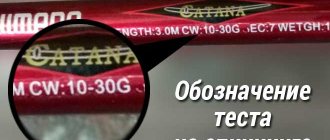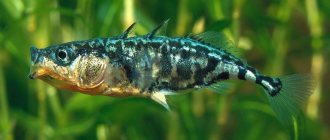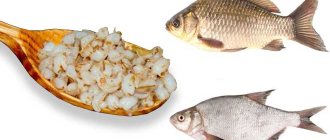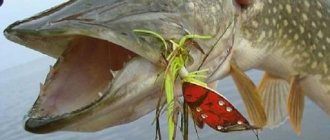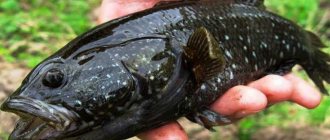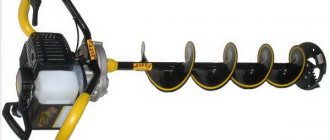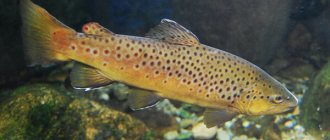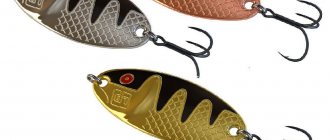A fishing knife is the most important attribute of any fisherman. It performs a huge number of functions: cutting tangled fishing line, cutting off a branch, cutting up the catch, setting the table, and this is just the beginning of a huge list. In Russia there is an enormous number of rivers and all kinds of reservoirs. It is not surprising that fishing is one of the most popular national pastimes: for some it is just a hobby, for others it is part of life.
Fisherman's knife.
The history of the origin of fishing knives
The history of the origin of such a tool as a fishing knife dates back to the times of primitive people, for whom fishing was one of the ways of subsistence.
In those days, the rivers were overflowing with fish, which could be caught simply by sticking a stick into the water.
A sharp bone was attached to the end of such a stick, with the help of which the catch was held and not torn off. So something like a harpoon appeared. Historians claim that it was this invention, through modernization and improvement, that was transformed into a modern knife.
Bone was used first, then metal. Also, after a certain period of time, the so-called ouds with steel hooks and a fishing knife appeared. Then it looked like a small plate with one sharpened side; such a device was convenient for gutting fish.
The fishing rods were transformed into all kinds of fishing rods and seines of today, but the fisherman’s knife remained an important piece of his equipment.
Types of fishing knives
Nowadays, fishing knives are presented in a wide range of models, in which anyone can find a tool that satisfies all their needs. Before moving on to choosing a tool, it is necessary to accurately determine the purpose of its use. After all, each blade has its own characteristics and functions.
Let's look at the six most famous and beloved types of fishing knives by fishermen and try to highlight their strengths and weaknesses.
Beluga knife type
These are small knives whose purpose is to cut large fish. It has a narrow blade with straight bevels, the butt is sharpened specifically for removing scales.
Such tools are made from steel grade 95x18. Blade thickness – 2 mm. They are also equipped with a stopper to prevent fingers from slipping.
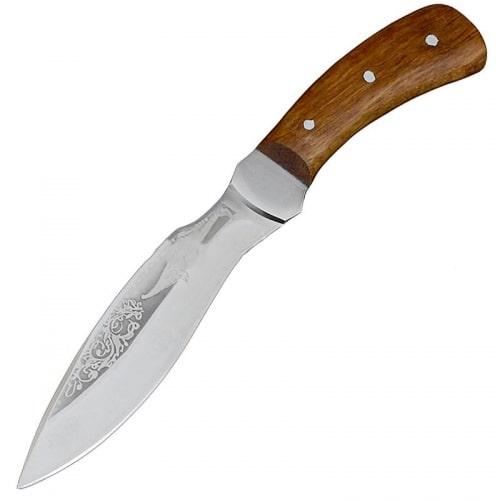
Beluga knife type.
Knife type "Splinter"
An excellent option for those. Who, in addition to fishing, is interested in hunting waterfowl. This model is universal, therefore it applies to both knives for fishing and hunting.
This is a small blade, very light, and has a classic, rather narrow blade shape. Made from steel grade 100X13M. The handle is very comfortable and ergonomic, making it easy to gut fish of various sizes and cut up waterfowl.
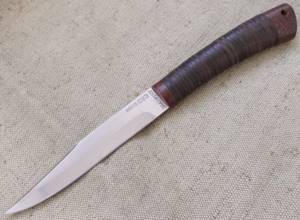
Knife type "Splinter".
Knife type "Gudgeon"
This knife is medium in size, relatively light, but very durable. The blade is made of steel grade 95x18. It has a very sharp blade designed to rip open any size catch.
The standard thickness does not exceed 2.4 mm. The blade is thin, formed by thin lens-shaped slopes that originate in the middle of the blade. The butt is slightly pressed against the tip.
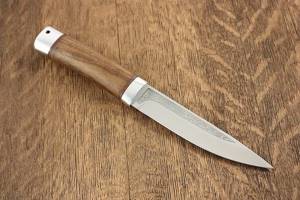
Knife type "Gudgeon".
Skewering knife
Among Far Eastern sailors, the fishing shear knife – a “workhorse” – is especially popular. The product is made in oriental style. There is a small hook on the butt, like on a harpoon for ripping open fish.
This hook is inserted into the anus of the fish and jerked sharply towards itself, then the head is cut off with the same instrument and the entrails are removed. A characteristic feature is the weighted handle.
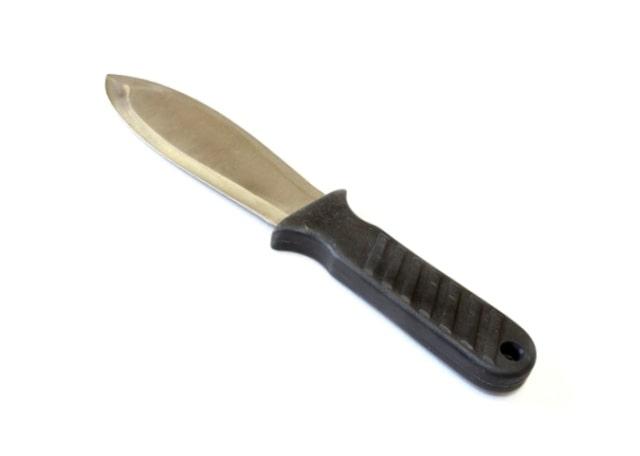
Skeleton knife for fishing.
Fisherman's folding knife
A folding fishing knife is the best option in terms of practicality and economy. It can consist of several blades serving different purposes, and be equipped with a bottle opener, screwdriver, or even a fork and spoon. Such knives do not need a sheath; their blade fits into the handle. When folded they are very compact.
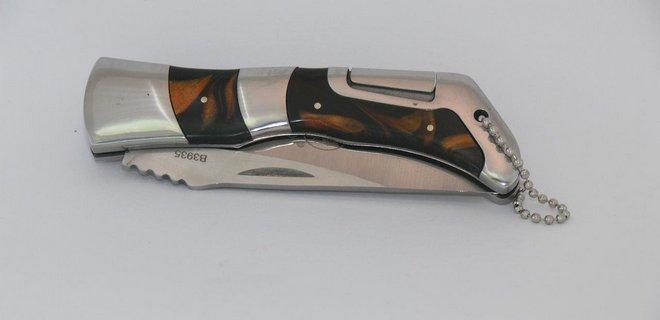
Fisherman's folding knife.
Japanese knives
The main task of this type of knives is cutting fish and finishing fillets. To do this, they are equipped with a very thin and sharp blade, which is particularly shock-absorbing and elastic.
Residents of coastal countries, for whom the basis of their diet is fish, could not help but create the most convenient knife for these purposes. The Japanese knife is highly valued in many countries.

Japanese fisherman's knife.
Main models
Fish cutting. Deba family
So, the numerous Deba family, as extensive and famous as the Nakiri or Usuba. Perhaps even more extensive, since the number of operations with fish was considerable, and in each region these tasks were solved in their own way. Accordingly, a whole range of knives belonging to this family appeared; and they all have common characteristic features.
- Versatility. Of course, this is conditional - the standard Deba is only partly similar to ordinary station wagons, but it is truly “tailored” for the widest range of tasks. First of all, this is separating fillets from bones, decapitating the fish, then separating small bones and cartilage, cutting raw fish into slices. There are several varieties that do only one of these actions, but the standard Deba does a good job of doing them all.
- Variability. Deba has an exceptionally wide range, including not only models for different actions, but also for different types of fish; Plus, there are even Europeanized models, for example Yo Deba, which has a handle that is familiar to us.
- Unique design. Deba is exactly the case when sharpening along the entire cutting edge is made with a variable angle. Of course, not random, but precisely verified. At the heel, the knife is artificially “blunted” to make it easier to cut hard bones and cartilage, and towards the tip the cutting edge becomes narrower for a thinner and more precise cut.

Deba is a huge family of kitchen knives designed for initial fish processing
There are several more “neutral” characteristic features, that is, those that cannot be attributed to the unconditional advantages of all knives in general, but which at the same time make Deba convenient for solving their tasks.
- The traditional Japanese oval handle, characteristic of all kitchen knives in this country, allows the hand to maneuver freely over the cutting board.
- A cutting edge that smoothly rises to the butt (and it, in turn, descends just as smoothly) is convenient if you want to regulate the accuracy and speed of your actions, as well as the force of pressure.
- The thickness of the butt can reach 10 mm - again, in order to cut thin bones and cartilage due to the weight.
- The usual length of a Deba blade reaches 240 mm, although there are specimens from 150 mm to 300 mm.
So, we have become familiar with the general characteristics; but there are several models in the family that deserve separate consideration. By the way, it is interesting to note that at first Deba’s division into types was not strictly functional, but “class-based”: some knives were intended for the homes of common people, others for kitchens in noble houses, and still others for the imperial table. True, in each of the groups it was precisely the different models that “survived” that we now have.
Hondaba
"True Deba", as the name is translated, is not very common, despite its name. It is the most massive of the entire family and is designed for separating fillets from bones and chopping the latter, which are quite thick and strong. This knife has not only a convenient cutting edge, but also a spine - mainly for crushing cartilage. As is the average for the family, the length of the “true” Deba reaches 240 mm, although specimens with a length of 180 mm are most often found. Since this is a very old variety of Deba, designed before the era of global integration, its sharpening is traditional Japanese, that is, one-sided.
Kodeba
One of the most versatile chef's knives - depending on the length, it can be used for removing fins, cutting and slicing large fish or small shellfish. It is loved in both professional and casual kitchens - in the latter case it is most often called Bonnau bocho and has a length of 160 mm to 200 mm, while Kodeba ranges from 100 mm to 140 mm. The cutting edge of Kodeba and Bonnau is exceptionally thin and is well suited for the most delicate operations.

Kodeba is a convenient chef's knife that is used in a wide range of fish operations.
Oroshi Deba
A long and narrow variety of Deba, similar to sashimi knives. True, the latter are intended for cutting raw fish into slices, and this family works with a product that still needs to be gutted and cut. The length of Oroshi reaches 270 mm, although you can find varieties from 150 mm.
Ai Deba
This is a knife very similar in appearance and functionality to the previous copy: it has the same purpose, approximately the same profile and the same “run-up” length - from 150 mm to 270 mm. Characteristic features are a thick spine, up to 10 mm, and a variable sharpening angle on the cutting edge.
Slicing fresh fish. Yanagi Ba
So, the fish is prepared for further operations, so knives from the Deba family are no longer very suitable for us. From now on, we'll be using knives like the Yanagi Ba, a willow leaf-shaped model suitable for making sashimi (including the eponymous Sashimi, which we cover below). Yanagi Ba, by the way, is sometimes called in a similar way - Sashimi and Shobu.

Yanagi Ba – aka “willow leaf”: a knife that is used for making sashimi and simply slicing fish into thin pieces
This knife is used to cut large pieces of fish into thin and long slices: the shape and length of Yanagi Ba itself suggests this. The longer the knife you have, the more convenient it is to work with long pieces (for example, with eel, which reaches impressive sizes).

Japanese kitchen knife Yanagi Ba
Yanagi Ba has a variation of Kensaki - in everything else, except for the tip, it repeats the shape of the main model, but the blade ends with a tanta-shaped tip.
Signs of fishing knives
Every fisherman, when he hears about a fishing knife, imagines something different, but no matter how much one would like to have an ideal, universal device, it is not easy to find one. A quality tool must be functional and practical, and also have:
- little weight;
- compactness, impact resistance and corrosion resistance;
- have a bright design;
- hold sharpening for a long time;
- fits securely in the sheath;
- have a comfortable ergonomic handle.
Rules for choosing a great knife
The huge variety of fishing knives makes it very difficult to choose, since upon entering the store your eyes immediately run wide. Before you go shopping for your treasured weapon, you need to clearly define the requirements that apply to it and compare them with your goals and objectives.
It’s not that difficult to figure everything out, it just takes a little time. Let's put everything into pieces.
Form and purpose
Each blade shape of a fishing knife has its own purpose. There are three main forms:
- Fillet knife. Equipped with a narrow and thin blade, very flexible. Many models are equipped with a serrator on the butt. The main task is to separate the meat from the bone.
- Cutting fisherman. Equipped with a thick short blade, used for chopping bones and gutting.
- Classical. Multifunctional, performs a variety of tasks, not as good as highly specialized ones, but several at once.
Steel
The steel from which the blade of a fishing knife is made must have optimal hardness and corrosion resistance. Recommended hardness is 55-60 units on the Rockwell scale. If the metal is softer, the cutting edge will have to be constantly sharpened.
A blade that is too hard loses its flexibility and can break upon impact; moreover, it is difficult to sharpen in field conditions. Anti-corrosion resistance is achieved by using various alloys.
The higher the content of carbon compounds, the more the steel is subject to corrosion.
Handle
The handle of the knife should fit securely and comfortably in the fisherman’s hand. When choosing, first of all, you should pay attention to the material; it should be tactilely pleasant.
A handle made of natural materials - wood or birch bark - is much more pleasant to the touch than synthetic ones. In addition, such a massive handle turns the tool into a floating knife. The float knife will not sink at the most crucial moment and will serve its owner longer.
But do not forget that when cutting fish, wood absorbs and retains a specific odor . In this case, plastic or dense rubber is a much more profitable material that is easier to care for.
Sheath
The sheath is one of the most important design elements of a bladed weapon; it protects the blade from external influences and protects others from careless handling of a sharp blade.
An ideally made sheath, when the blade enters, makes a characteristic sound, indicating correct fixation.
Preference should be given to a material that will ensure long-term and reliable operation of the knife. The sheath is made from the following materials:
- leather;
- Kydex;
- Cordura.
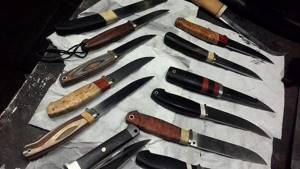
Fishing knives of various types.
Regional models
Of course, in the 17th century there was no special standardization of kitchen tools, and in each region the task of cutting fish and seafood was solved differently (including in houses of different incomes: remember that Deba knives once had a “class” division ?). Some of the regional knives for cutting and slicing fish have “survived” due to their convenient design and are now actively used by both Japanese and European chefs in sushi bars and tempura establishments.
Takobiki
A knife intended almost exclusively for cutting seafood, mainly octopus. It is performed in the Kanto tradition, and its length reaches an awesome 360 mm. However, there are shorter Takobiki, from 200 mm. Its sharpening, as a rule, is one-sided, although European adaptations can also be found.
Ajikiri
Boning knife with one-sided sharpening.
Maguro-kiri
It is almost a sword - the length of Maguro sometimes reaches 800 mm. It is designed specifically for industrial purposes, in particular cutting tuna and other large sea fish.
Japanese Magurokiri knife
Sushikiri
A specialized knife for making sushi and rolls: it is especially important here that the slices are as thin as possible, otherwise it will be impossible to wrap anything in them.
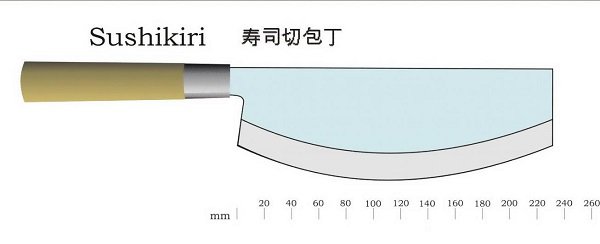
Sushikiri must be extremely sharp to cut fish into thin, even slices
Edosaki/Unagisaki/Kyosaki Unagi/Kyisyusaki/Nagoyasaki
Specialized knives for cutting eels.
Honekiri/Hamokiri
A device for removing bones and cartilage from the body of an eel. A very massive and long knife, reaching a length of 330 mm.
Mioroshi
A long and narrow knife, similar to the Yanagi Ba, but with a thicker blade. Can also be used instead of Deba family knives, similar to Oroshi-Deba.
Sujihiki
A table knife, served along with the finished dish and used for slicing fish by the eater himself.
Dakketsu
Fishing knife for quickly killing fish right on board the vessel.
What to consider when buying a knife
When purchasing a fishing knife, special attention is paid to the following criteria:
- The steel should have medium hardness, then the knife will not split under heavy load, and will not constantly become dull.
- Carbon steel blades are not suitable for fishing - they rust quickly.
- The best parameters for a fishing tool are thin, flexible, narrow with a straight blade.
- The butt should not be too thick, otherwise the product will be too heavy.
- The knife should be of medium size in order to perform the maximum number of functions.
- The main parameter for the handle is a comfortable fit in the hand. It should not slip, and the material should not get wet or absorb odors.
Manufacturing materials
The durability, practicality, quality and appearance of a fishing knife directly depend on the materials used. The steel used to make the blade is especially important. It must meet the following characteristics:
- The hardness of steel depends on the amount of carbon in the raw material. The higher the percentage of carbon, the stronger and harder the material. This indicator can be determined by the markings on the instrument.
- Resistance of steel to impact loads. One of the best steel grades for fishing knives in this regard is U-7 and U-9. It withstands mechanical shocks very well.
- Non-susceptibility to corrosion is an important criterion. Products made from grades 420 and 440 steel are durable due to their resistance to rust.
The knife handle can be made of plastic, wood or heat-resistant rubber. Each of the listed materials has certain pros and cons.
